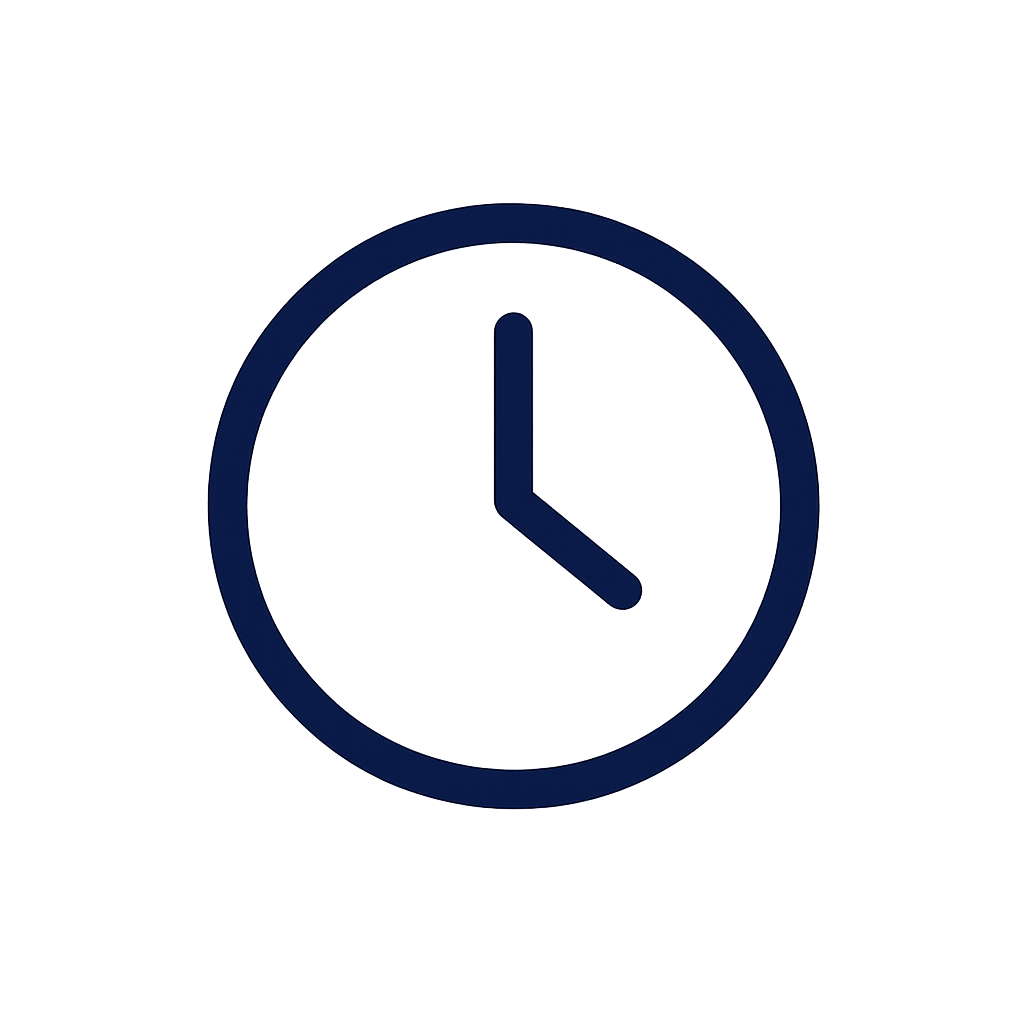Atlas Systems Named a Representative Vendor in 2025 Gartner® Market Guide for TPRM Technology Solutions → Read More

CIA Triad in Cybersecurity: Principles & Real-World Examples


10 min read | Last Updated: 02 Dec, 2025
TL;DR
- Foundational security model: CIA Triad (confidentiality, integrity, availability) provides practical lens dissecting root causes, assigning accountability, validating security posture across frameworks.
- Underpins modern frameworks: NIST SP 800-53, ISO 27001, SOC 2 Type II audits expect all three pillars demonstrably enforced across systems and vendors.
- ComplyScore enforces fundamentals: Real-time third-party risk monitoring, regulatory compliance, breach impact tracing built around CIA-aligned domains for continuous availability, verified integrity, hardened access.
- Diagnostic clarity essential: Security failures rarely happen in vacuum; triad shows which principle failed (confidentiality, integrity, availability) enabling effective response and accountability
A third-party vendor exposed 2.7 million patients and a staggering 8.8 million appointment records through a misconfigured cloud database. What failed? Confidentiality.
A government financial system had internal records deleted to conceal unauthorized fund transfers. What failed? Integrity.
A ransomware payload locked customer portals for 72 hours. What failed? Availability.
These incidents are not theoretical. They have occurred across healthcare networks, fintech platforms, and SaaS environments. And in most breach investigations, the breakdowns can be traced to one of three specific areas: access control, data accuracy, or system uptime.
A misstep in data access policy can trigger a confidentiality breach. Tampered logs may go unnoticed if integrity checks are weak; a stalled login page during an incident points to availability gaps.
Breaches involving leaked records or tampered logs are often tied to gaps that were visible in advance, if someone had been looking in the right place. Security teams reviewing a breach often find the same recurring patterns: someone had too much access, a change went through without validation, or no one noticed a backup system had failed.
These issues tie directly to the CIA Triad. Confidentiality breaks when permissions are too loose. Integrity falters when unauthorized edits go undetected. And when availability is overlooked, even a minor disruption can turn into a service outage. Recognizing where controls weaken helps security teams narrow their focus before threat actors gain ground.
What is the CIA Triad?
The CIA Triad is a practical model used to assess where your security posture stands and where it might fail. It consists of confidentiality, integrity, and availability. Most security incidents fall into one of these three categories. That is why the CIA Triad still appears in every major risk and compliance framework in some form.
What are the Components of the CIA Triad?
Each principle in the CIA Triad corresponds to specific operational risks and defensive controls. You are likely already managing all three, whether explicitly labeled that way or not.
1. Confidentiality
- Restrict access by applying directory-based rules or enforcing scoped privileges via RBAC.
- Encrypted data, both static and moving, gains resilience against intercepted sessions or endpoint compromise.
- Limit exposure by isolating business-critical datasets from shared zones or overly broad team access.
- Common failure: a cloud storage bucket holding PHI is left open to unauthenticated access during a vendor onboarding process.
In practice, leaked credentials allow unauthorized access to financial files in a shared collaboration tool.
2. Integrity
- Verification works when it is operational, not just theoretical. Hashes, signatures, and audit trails must be tied to actual validation steps, not just logged for compliance.
- File integrity monitoring tools detect unauthorized changes that bypass expected processes.
- Database rollback capabilities help recover from silent corruption or malicious updates.
- Common failure: a log file is altered post-incident to obscure how a privilege escalation occurred.
In practice, a financial record is modified without triggering a validation check.
3. Availability
- Failovers only help if recovery is immediate. Redundancy through paired nodes or region-aware load balancing helps close that gap.
- Scheduled updates reduce exposure to unpatched vulnerabilities that might otherwise take systems offline.
- Defined resource thresholds and throttling rules help stabilize environments under strain.
- Common failure: A forgotten firmware update disables a clustered node during a service spike.
In practice, ransomware locks out internal support portals for two business days, halting onboarding.
Why is the CIA Triad Important?
Security failures rarely happen in a vacuum. When something goes wrong: data exfiltration, system downtime, unauthorized changes, the question is not just what happened, but which principle failed. The CIA Triad gives you that diagnostic clarity, not in abstract terms, but as a practical lens for dissecting root causes, assigning accountability, and validating your security posture.
What makes the triad enduring is how seamlessly it underpins modern frameworks. NIST SP 800-53 breaks down into access control (confidentiality), audit mechanisms (integrity), and continuity planning (availability). ISO 27001 embeds it through Annex A controls. SOC 2 Type II audits expect all three pillars to be demonstrably enforced across systems and vendors.
Zero Trust Architecture expands on this, not by replacing the triad, but by operationalizing it continuously. Instead of assuming internal trust, ZTA demands that confidentiality, integrity, and availability be proven at each access point. The triad also runs silently beneath Extended Detection and Response (XDR) platforms, which detect threats based on violations of these three principles.
And in third-party risk management, you already rely on it:
- Can the vendor restrict data access? (C)
- Do they log system changes with integrity checks? (I)
- What’s their redundancy and uptime SLA? (A)
You might not always call it the CIA Triad, but every audit, breach review, or procurement decision still comes back to it. That is the point. It remains relevant not because it is foundational, but because it is still operational.
A Few Examples of the CIA Triad
These real incidents show how gaps in confidentiality, integrity, or availability led directly to major consequences and why architecting your controls around the triad still matters.
Confidentiality breach
A healthcare staffing platform, ESHYFT, exposed over 86,000 records, complete with social security numbers, professional credentials, and scanned IDs, in a publicly accessible Amazon S3 bucket for months. There was no encryption or access control, and security researchers disclosed the exposure before the firm secured its cloud assets.
Integrity violation
Financial systems often pause file integrity checks during maintenance windows. One organization discovered that attackers had retroactively edited transaction logs on a billing system to hide fraudulent transfers. With integrity monitoring disabled during a patch cycle, the manipulation went undetected until discrepancies surfaced during reconciliation.
Availability failure
In London, hospitals served by Synnovis, a diagnostic laboratory for major NHS trusts, experienced significant disruptions after a ransomware attack shut down their IT systems. Over 1,500 surgical procedures and outpatient services were postponed. Systems remained offline for days, and clinical capacity dropped sharply.
These cases illustrate that data exposure, undetected tampering, or service unavailability is rarely accidental; it is the result of a missing or broken CIA control. When teams cannot point clearly to a failed leg of the triad, the response becomes slower, more expensive, and less effective.
In practice, designing around CIA does more than meet compliance; it helps prevent failures by making sure:
- Confidentiality controls limit access and prevent public exposure
- Integrity checks are continuous, not skipped during updates
- Availability systems are exercise-tested, not assumed reliable
Mapping critical workflows: cloud storage, billing systems, and lab processing, to each pillar ensures that when something breaks, your team knows exactly what went wrong and where to fix it.
Should You Use the CIA Triad?
You are likely using it already, whether you refer to it by name or not. Nearly every control library, audit checklist, or enterprise policy traces back to the CIA model in some form. The model is embedded not just in design documents but in how failures are diagnosed and how compliance is measured.
Here is how several major frameworks align with CIA principles:
- NIST SP 800-53
- Confidentiality: Emphasized through control families like Access Control (AC) and System & Communications Protection (SC).
- Integrity: Addressed via Audit and Accountability (AU) and System Integrity (SI).
- Availability: Covered under Contingency Planning (CP), Incident Response (IR), and System Maintenance (MA).
- ISO/IEC 27001
- Annex A ties CIA principles to operational controls. Access control ensures confidentiality. Change management and logging support integrity. Backup and continuity planning reinforce availability.
- SOC 2 Type II
- Auditors look for sustained enforcement of policies, not just policy existence. They want to know if systems retain confidentiality across user sessions and if uptime metrics match claims. Availability controls are judged based on operational outcomes, not design assumptions.
- Zero Trust Architecture (ZTA)
- This framework picks up where the CIA Triad leaves off. Identity verification ensures only the right users get through. Device posture checks help preserve system integrity. Real-time policy enforcement ensures availability under pressure, not just during baseline operations.
- Third-Party Risk Management (TPRM)
- The triad shapes how you assess vendors. Does the vendor restrict access to your customer data (C)? Can they ensure logs, configurations, and files are not tampered with (I)? Are their platforms structured to recover quickly during outages or attacks (A)? The answers often determine risk tiering and procurement approval.
There is no need to discard the CIA Triad in favor of newer terminology. The concept only holds weight if you apply it with consistency. Techniques may shift: controls, monitoring, behavior analytics, governance practices, but they still orbit the same priorities. And when incidents happen, the question does not change: did access go too far, did something slip past unnoticed, or did a system fail when it mattered?
Operationalize CIA Triad Principles in Cyber Security with Atlas Systems
Security failures rarely stem from obscure threats. They are usually familiar: a vendor had excessive access, logs were quietly altered, or a system failed when needed most. These outcomes are not just operational; they point to gaps in confidentiality, integrity, or availability.
That is why the CIA Triad still matters. It is not just conceptual; it shows up in breach reports, audit logs, risk assessments, and vendor reviews. And while the threat surface evolves, the triad remains the clearest way to evaluate where security programs hold or break.
Atlas Systems helps you enforce those fundamentals, at scale, across your internal teams and vendor network. Through the ComplyScore® platform, we enable real-time third-party risk monitoring, regulatory compliance, and breach impact tracing built around CIA-aligned domains. And our cybersecurity services support continuous availability, verified data integrity, and hardened access controls, without drowning your team in complexity.
Need help aligning your cybersecurity and TPRM strategy with CIA-based best practices? Talk to our specialist!
FAQs on CIA Triad
1. What is the CIA Triad?
The CIA Triad refers to the core principles of cybersecurity: Confidentiality, Integrity, and Availability. These principles stand as a practical way to evaluate where your security posture protects data and where it may fail. When you refer to the CIA Triad, you’re looking at how well your people, processes, and systems keep information secure, accurate, and accessible. Together, they form a foundational model used across every major security and compliance framework.
2. Can you give quick examples of confidentiality, integrity, and availability?
Encrypting employee records protects confidentiality. Hashing verifies integrity. Backups and failovers ensure availability.
3. How is the CIA Triad used in vendor risk management?
Vendors can leak your data, tamper with records, or go down unexpectedly. The triad helps you flag those risks before they hit operations.
4. Is the CIA Triad outdated with frameworks like Zero Trust?
No. Zero Trust builds directly on CIA; it just enforces it continuously. Modern architectures still map every control to those three outcomes.
5. Which security frameworks use the CIA Triad?
NIST, ISO 27001, SOC 2, and HIPAA all embed CIA-based controls. Even if they do not name it, they still measure against it.
Related Reading
Blogs
.png?width=869&height=597&name=image%20(5).png)

.png?width=300&height=175&name=Rectangle%2034624433%20(2).png)







.png?width=645&height=667&name=Widgets%20(2).png)






.png)

